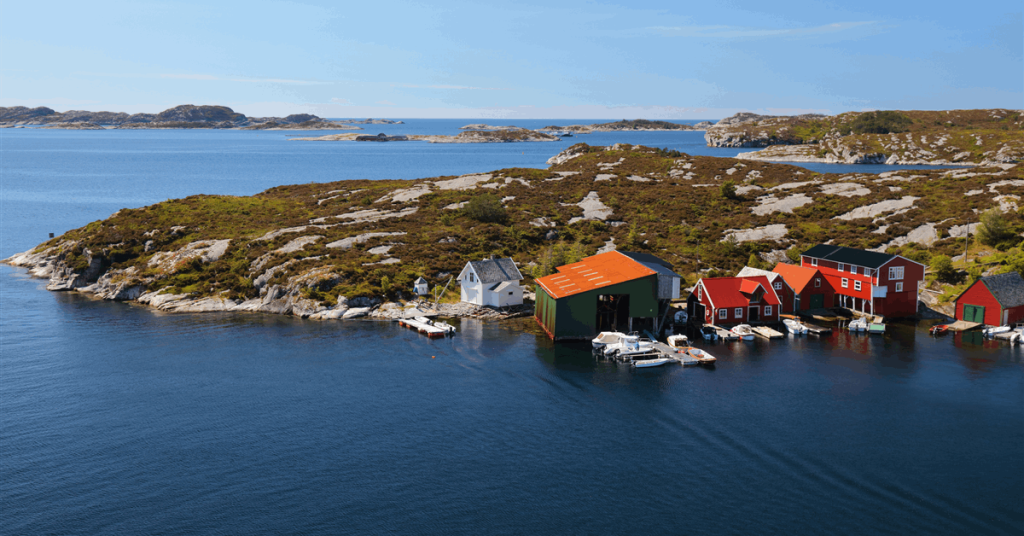Harbour Energy PLC has found a suitable reservoir for carbon dioxide (CO2) injection on Norway’s side of the North Sea about 30 kilometers (18.64 miles) southeast of the Yme platform.
Well 9/6-1 is the first well drilled in carbon storage exploration license (EXL006), awarded May 2023. “This is the fourth well drilled to investigate potential commercial storage of CO2 on the Norwegian continental shelf”, the Norwegian Offshore Directorate said in an online statement.
The wildcat well aimed to assess the injection potential of Middle Jurassic and Middle and Upper Triassic reservoir rocks in the area of the planned Havstjerne storage project. It was drilled to a vertical depth of 3,366 meters (11,043.31 feet) below sea level. The water depth was 90 meters. Drilling was terminated in the Skagerrak Formation in the Upper Triassic.
“Formation pressure data indicates that the rocks in the Sandnes and Bryne formations are located in a regional hydrostatic pressure gradient for this area”, the Directorate said.
“Extensive volumes of data have been acquired from the reservoir and caprocks. An injection test has also been conducted. Preliminary results are positive.
“The data will now be subject to further analysis, and the results will become part of the basis for future decisions regarding investment in the Havstjerne storage project”.
The well has been permanently plugged. Drilling was conducted by the DeepSea Nordkapp rig.
Upstream oil and gas player Harbour owns 60 percent of EXL006 and is operator through Harbour Energy Norge AS. Stell Maris CCS AS holds 40 percent.
Last month the Directorate said two wells drilled by Equinor ASA in the North Sea about 20 kilometers (12.43 miles) east of the Troll A platform showed a suitable reservoir for CO2 storage.
Wells 32/4-4 and 32/7-1, drilled in the Alpha and Gamma areas respectively, make up a potential injection site for the “Smeaheia” project. They are the first to be drilled under exploration license EXL002, awarded June 2022, and the second and third wells drilled to investigate the possibility of commercial CO2 storage in Norwegian waters. The first, well 32/4-3 S, was also drilled by Equinor in 2019.
Equinor and Harbour are partners in a permit straddling blocks 15/8, 15/9, 15/11 and 15/12. Harbour holds a 60 percent interest as operator while Equinor Low Carbon Solution AS has 40 percent.
On March 5, 2025, the Energy Ministry designated a new area of the North Sea for application for licenses to explore the potential of CO2 storage. The acreage comprises defined blocks on the Norwegian side of the sea. The application window was to close April 23.
That was the eighth time acreage was offered for CO2 storage exploration or exploitation on the Norwegian continental shelf, according to the Directorate.
Norway has so far awarded 13 CO2 storage licenses: 12 for exploration and one for exploitation.
The Norwegian continental shelf holds a theoretical CO2 storage capacity of 80 billion metric tons, representing about 1,600 years of Norwegian CO2 emissions at current levels, according to a statement by the ministry April 30, 2024.
To contact the author, email jov.onsat@rigzone.com
What do you think? We’d love to hear from you, join the conversation on the
Rigzone Energy Network.
The Rigzone Energy Network is a new social experience created for you and all energy professionals to Speak Up about our industry, share knowledge, connect with peers and industry insiders and engage in a professional community that will empower your career in energy.
element
var scriptTag = document.createElement(‘script’);
scriptTag.src = url;
scriptTag.async = true;
scriptTag.onload = implementationCode;
scriptTag.onreadystatechange = implementationCode;
location.appendChild(scriptTag);
};
var div = document.getElementById(‘rigzonelogo’);
div.innerHTML += ” +
‘‘ +
”;
var initJobSearch = function () {
//console.log(“call back”);
}
var addMetaPixel = function () {
if (-1 > -1 || -1 > -1) {
/*Meta Pixel Code*/
!function(f,b,e,v,n,t,s)
{if(f.fbq)return;n=f.fbq=function(){n.callMethod?
n.callMethod.apply(n,arguments):n.queue.push(arguments)};
if(!f._fbq)f._fbq=n;n.push=n;n.loaded=!0;n.version=’2.0′;
n.queue=[];t=b.createElement(e);t.async=!0;
t.src=v;s=b.getElementsByTagName(e)[0];
s.parentNode.insertBefore(t,s)}(window, document,’script’,
‘https://connect.facebook.net/en_US/fbevents.js’);
fbq(‘init’, ‘1517407191885185’);
fbq(‘track’, ‘PageView’);
/*End Meta Pixel Code*/
} else if (0 > -1 && 88 > -1)
{
/*Meta Pixel Code*/
!function(f,b,e,v,n,t,s)
{if(f.fbq)return;n=f.fbq=function(){n.callMethod?
n.callMethod.apply(n,arguments):n.queue.push(arguments)};
if(!f._fbq)f._fbq=n;n.push=n;n.loaded=!0;n.version=’2.0′;
n.queue=[];t=b.createElement(e);t.async=!0;
t.src=v;s=b.getElementsByTagName(e)[0];
s.parentNode.insertBefore(t,s)}(window, document,’script’,
‘https://connect.facebook.net/en_US/fbevents.js’);
fbq(‘init’, ‘1517407191885185’);
fbq(‘track’, ‘PageView’);
/*End Meta Pixel Code*/
}
}
// function gtmFunctionForLayout()
// {
//loadJS(“https://www.googletagmanager.com/gtag/js?id=G-K6ZDLWV6VX”, initJobSearch, document.body);
//}
// window.onload = (e => {
// setTimeout(
// function () {
// document.addEventListener(“DOMContentLoaded”, function () {
// // Select all anchor elements with class ‘ui-tabs-anchor’
// const anchors = document.querySelectorAll(‘a .ui-tabs-anchor’);
// // Loop through each anchor and remove the role attribute if it is set to “presentation”
// anchors.forEach(anchor => {
// if (anchor.getAttribute(‘role’) === ‘presentation’) {
// anchor.removeAttribute(‘role’);
// }
// });
// });
// }
// , 200);
//});

